"The Furniture" is our weekly series on Production Design. Here's Daniel Walber...
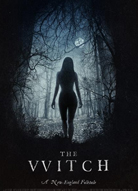 The Witch has a lot in common with Black Narcissus. I probably wouldn’t have noticed it if the 1947 Powell & Pressburger classic weren’t still on my mind from last week’s column, but it’s very true. Thomasin’s family of fanatical Puritans and Sister Clodagh’s nuns both find themselves on the edge of their known world, motivated by faith to make a new life. Yet both groups are doomed from the start. They’re overwhelmed by their environments and fall in the face of doubt, sexual temptation and the power of nature.
The Witch has a lot in common with Black Narcissus. I probably wouldn’t have noticed it if the 1947 Powell & Pressburger classic weren’t still on my mind from last week’s column, but it’s very true. Thomasin’s family of fanatical Puritans and Sister Clodagh’s nuns both find themselves on the edge of their known world, motivated by faith to make a new life. Yet both groups are doomed from the start. They’re overwhelmed by their environments and fall in the face of doubt, sexual temptation and the power of nature.
Of course, Thomasin isn’t bedeviled by gorgeous matte paintings of the Himalayas. The Witch was shot in the very real wilderness of Ontario, in the former town of Kiosk. That’s “former” because the population starting leaving after the fire at the lumber factory in 1973. Now there’s just some abandoned railroad tracks and a towering forest. If that’s not the perfect place to shoot a horror film, I don’t know what is.
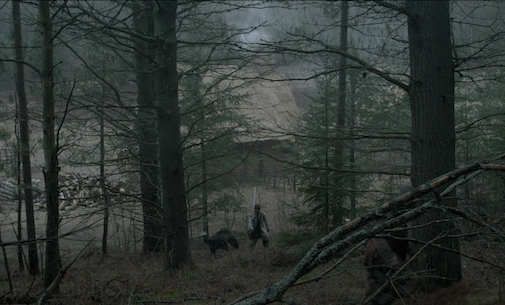
The landscape dwarfs the solitary 17th century farm where the bulk of the film takes place. Cinematographer Jarin Blaschke takes advantage of this as frequently as possible. There are countless shots in which the cast seem like helpless children at the mercy of the trees...
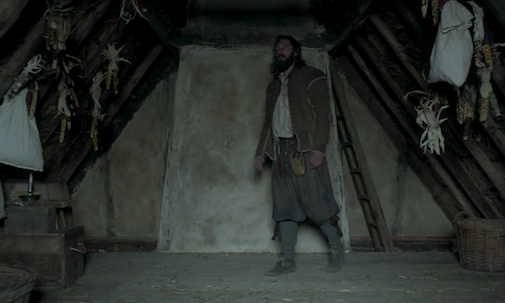
The sets often take the same approach. Production designer Craig Lathrop, art director Andrea Kristof and set decorator Mary Kirkland collaborated on the cavernous, unfriendly interiors. The attic is a representative example. One end is bare wall, decorated only by the creepy bundles of drying corn that hang all over the farm.
The other side of the room is a triumph of harrowing simplicity. There's corn there as well, tied to the walls like ritual decoration. There is no bed, only a small blanket on the floor where the young Caleb sweats and suffers. The only window is barred. Light blasts through like the judgement of a vengeful god.
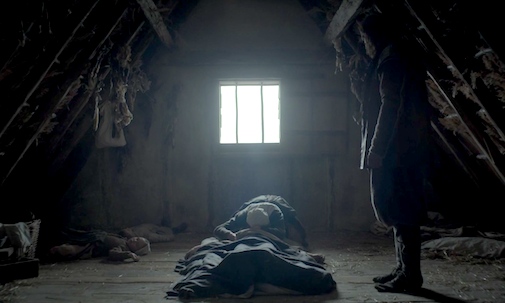
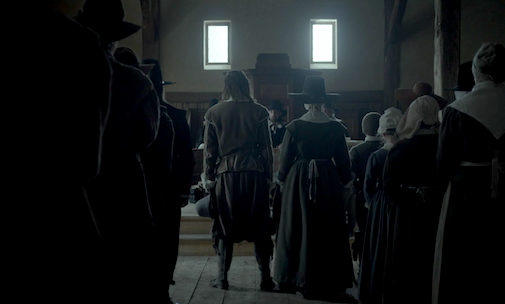
It hearkens back to one of the first shots in the film, when father William shouts his way into a banishment by the leaders of their New England colony. The light is also strict and harsh in this meetinghouse, though it is doubled. Every interior in the film is like a church in which the windows shine down on the parishioners, not with the edifying and beautiful lessons of stained glass, but with a stern and unforgiving glare.
The sets, therefore, encourage an atmosphere of unavoidable doom. Yet they also foster a much more mundane proof of the family’s impending disaster. It’s subtle, but the production design team seems to hint that William is a terrible farmer. This comes up once in the wilderness, when he can’t use his gun without it backfiring into his eye, but it’s also lurking in the background. Notice that no progress is ever made on the unfinished barn, behind Thomasin in the following shot.
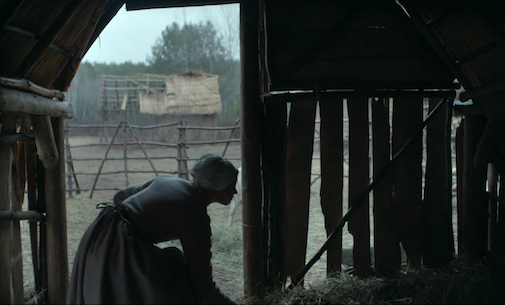
William seems completely incapable of catching a rabbit in a trap, as well. Then there are the miserable crops that sit next to the house. One could argue that all of this is the result of the witch’s curse, a sinister project of the Devil and his servants in the forest. But it’s more interesting to read it as a fatal flaw in the worldview that William imposes on his family. Religious fanaticism is all well and good in the abstract, but it’s useless when it comes to raising children or building a community. No wonder this family is so ripe for internal chaos and interfering witchcraft. They can’t even eke out their livelihoods from the soil.
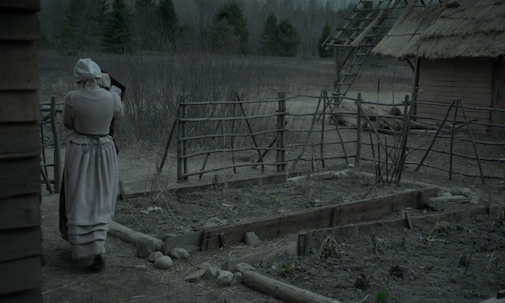
Recently on "The Furniture": Star Wars: The Force Awakens (2015), That Hamilton Woman (1941), Joy (2015)